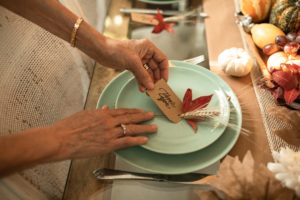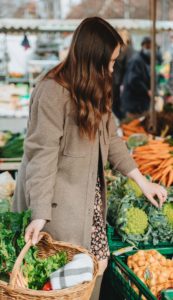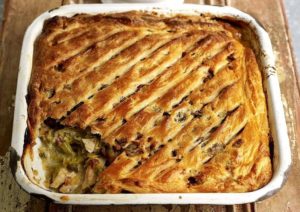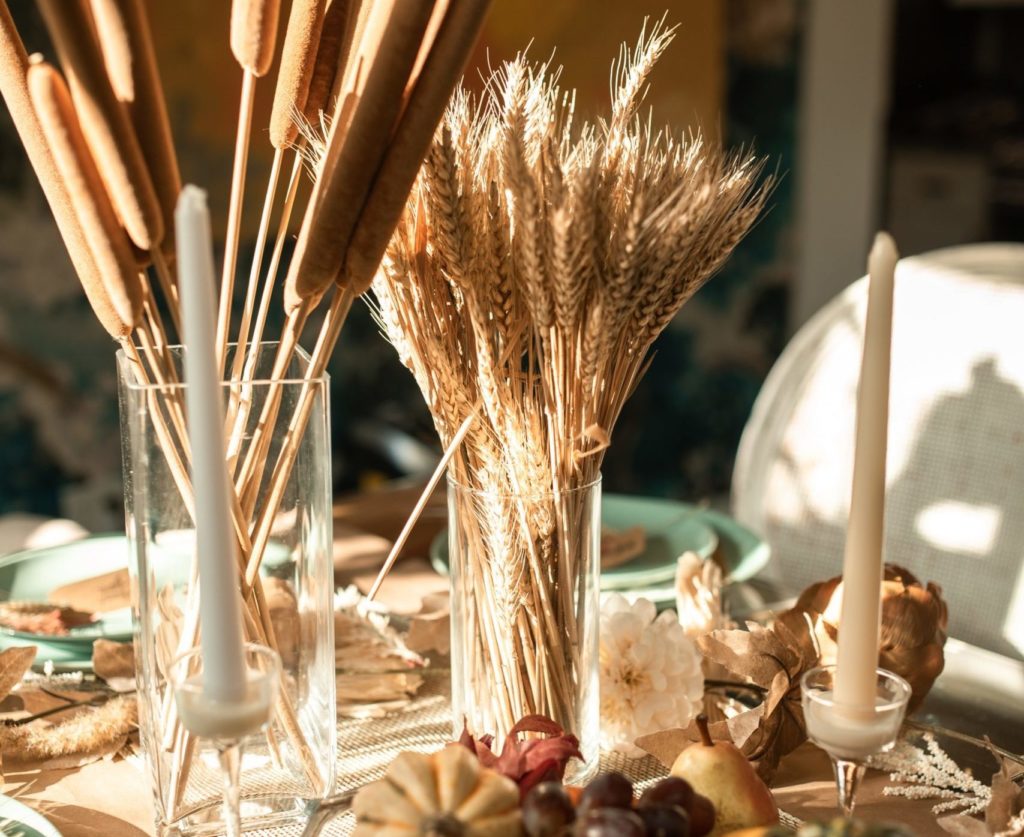The uptick in household waste over the holiday season, beginning with Thanksgiving, presents a considerable environmental challenge. Domestic food waste is already a major issue in America throughout the year, where around 40% of our food is tossed straight in the trash, and the scale of the problem grows around Thanksgiving and Christmas.
Aside from the scourge of food waste there is also a rise in plastic and paper waste during the festive season. Plastic tableware creates over one million tons of waste each year and is most often deployed at big dinners like Thanksgiving.
The silver lining here is that with a little extra planning everyone can address the level of waste we create at Thanksgiving, and there are several easy zero-waste strategies that will help any household cut down food and plastic waste this year—without compromising on indulgence.
A Zero-Waste Approach to Thanksgiving
It’s easy to get carried away with all the must-haves for Thanksgiving dinner, so it’s worth taking a step back to realize that the core traditions of Thanksgiving share a lot with a zero-waste lifestyle.

The modern mainstays of Thanksgiving – turkey, sweet potato, pumpkin – were farmed in a sustainable manner by Native Americans, and after they were consumed, the leftover seeds were replanted in the same earth. The mass production of popular Thanksgiving ingredients turns this sustainability on its head, placing great strain on food systems at one particular point in the year.
But apart from growing your own pumpkins, or shopping for locally reared organic turkeys, what else can you do this thanksgiving to reduce waste? Here, we look at a few useful ideas to help you push towards zero waste this holiday season.
Check the Cupboards and Make a Detailed List
Before you head out shopping or even fix on your final menu, dig into your cupboards or pantry and see what you might already have in stock from last year. Thanksgiving dinner involves a bunch of rarely used ingredients that might still be lurking at the back of the cupboard.
 This could inform dishes on your menu or present opportunities for a side you hadn’t considered this year. It’s also worth checking with guests if they have that missing can of pumpkin that will save a trip to the store.
This could inform dishes on your menu or present opportunities for a side you hadn’t considered this year. It’s also worth checking with guests if they have that missing can of pumpkin that will save a trip to the store.
The next step is to carefully list the ingredients you need, here it really serves to be as specific as possible about quantity. How many guests are going to be there? How much leftover food can you reasonably use in your own household or to distribute among guests?
This is also a good moment to stop and reflect, is there a side dish you keep making year after year that never actually gets eaten? If so, it might be time to update the menu a little.
Shop Locally
Frozen turkeys are shipped across the country to meet booming demand ahead of the holiday season, racking up considerable freight mileage along the way. So why not find out what’s available from local farms or butchers before bringing home a frozen bird?
 Not only will your meat or poultry taste fresher, you’ll avoid the environmental cost of associated transport, and small scale, locally farmed poultry is likely to be more sustainably reared too.
Not only will your meat or poultry taste fresher, you’ll avoid the environmental cost of associated transport, and small scale, locally farmed poultry is likely to be more sustainably reared too.
Similarly, if you can, swap the megastore for a local farmer’s market. As well as providing tastier ingredients that are in season, shopping at the famer’s market means avoiding unnecessary plastic packaging around your vegetables. Just remember to take your reusable bags for your fresh veggies.
Alternatively, Misfits Market is a great hack for you to intervene directly in the food industry’s own wasteful practices. Misfits plucks the imperfect and unwanted vegetables from the beautified commercial food supply and sells them to you below market value. Cheap, natural, unique vegetables delivered to your door.
Cook From Scratch
 For a social ceremony that is purportedly all about food, cooking from scratch shouldn’t feel like a chore. Aside from tasting better, raw ingredients give the added benefit of putting food scraps back in our own hands. Pre-diced or spiralized vegetables not only put us at one more remove from the origins of our food, they necessitate plastic and polystyrene packaging that creates unnecessary waste—not to mention the extra cost of coming pre-prepared, which is passed on to the consumer.
For a social ceremony that is purportedly all about food, cooking from scratch shouldn’t feel like a chore. Aside from tasting better, raw ingredients give the added benefit of putting food scraps back in our own hands. Pre-diced or spiralized vegetables not only put us at one more remove from the origins of our food, they necessitate plastic and polystyrene packaging that creates unnecessary waste—not to mention the extra cost of coming pre-prepared, which is passed on to the consumer.
When you’re working with ingredients from scratch, keep a tub on the kitchen counter to gather your offcuts for composting. You don’t need a garden to begin to compost, and If you live in an apartment this could be an opportunity to start an indoor compost bin, or look into local food recycling facilities.
Reuse Leftovers
 The abundance of ingredients that make their way across your kitchen counter at this time of year provide opportunities for culinary innovation—and you don’t need to be the consummate chef to make the most of your offcuts and leftovers. Add a turkey carcass to a stock pot and when it’s done pour it into ice cube containers for use throughout the year. When the leftover turkey flesh begins to dry out a few days later, add it to a turkey and leek pie, swimming in sauce.
The abundance of ingredients that make their way across your kitchen counter at this time of year provide opportunities for culinary innovation—and you don’t need to be the consummate chef to make the most of your offcuts and leftovers. Add a turkey carcass to a stock pot and when it’s done pour it into ice cube containers for use throughout the year. When the leftover turkey flesh begins to dry out a few days later, add it to a turkey and leek pie, swimming in sauce.
Tableware and Decorations
 Avoid the eye-catching plastic or single-use decorations you might come across in stores. Thanksgiving table decoration is another zero-waste opportunity to use what you find in nature to conjure that festive atmosphere. Dried out foliage and flowers can make stunning rustic table pieces alongside butternut squash that can be used in the kitchen in the weeks to come. If you have young children, a foraging trip is a fun and (lightly) educational way to connect the idea of Thanksgiving back to the land on which we live.
Avoid the eye-catching plastic or single-use decorations you might come across in stores. Thanksgiving table decoration is another zero-waste opportunity to use what you find in nature to conjure that festive atmosphere. Dried out foliage and flowers can make stunning rustic table pieces alongside butternut squash that can be used in the kitchen in the weeks to come. If you have young children, a foraging trip is a fun and (lightly) educational way to connect the idea of Thanksgiving back to the land on which we live.
The prospect of used dishes mounting up on the counter throughout the day can be overwhelming and leads some of us to reach for plastic or paper dishes. But the huge environmental impact of single-use dishes should steer us away from this habit, and those hungry hands at the dinner table should make light work of the dirty dishes later on.
However, if the issue is a dearth of plates and bowls in the house, asking your guests to bring along a few of their own is a great way to add to the communality of the meal and lend character to your tabletop. Equally, serving up the sides in glass storage containers is one way to avoid extra dish washing after dinner.
Send Them Off with Leftovers
If you plan on having leftovers, avoid using single-use wraps and packaging for the fridge and freezer. There are plenty of durable storage options from beeswax wraps, to glass or stainless-steel containers that will last a lifetime. If you’re keen on sending your guests home with leftovers, let them know ahead of time so they can bring their own containers. Or, if you’re thinking of gift ideas, make a present of a personal stainless-steel lunchbox to each guest.
Source: zerowaste.com
While the idea of taking leftovers to local food banks or soup kitchens might seem like a generous one, these organizations usually plan their Thanksgiving provision far in advance and rarely accept perishable goods. The best thing you can do is call ahead of time and see what they need. It may be non-perishable food you have at home, or it may simply be time or money. The best option for distributing your leftovers is to look closer to home. Is there a solitary or less-able neighbor who might benefit from a home-cooked meal?
A zero-waste Thanksgiving doesn’t have to compromise on abundance or even indulgence. It’s simply about drawing from the sustainable food sources closest to hand (usually the tastiest) and making the most economic use of what’s left over for yourself and your community. Check out the zero-waste online shop for a range of sustainable kitchenware, and sign up to our blog for more tips and guides to going zero waste.

